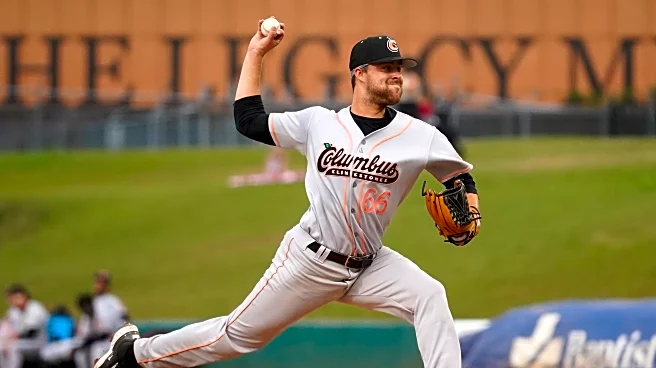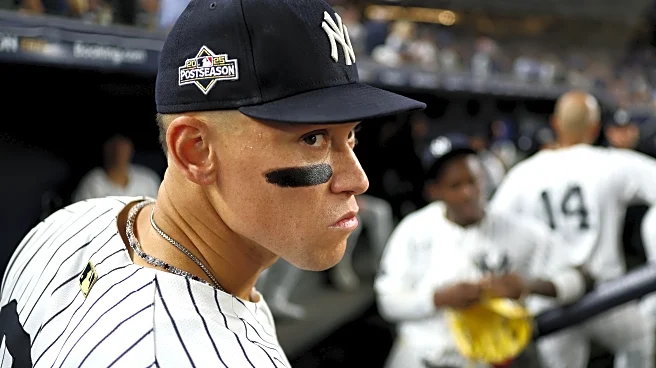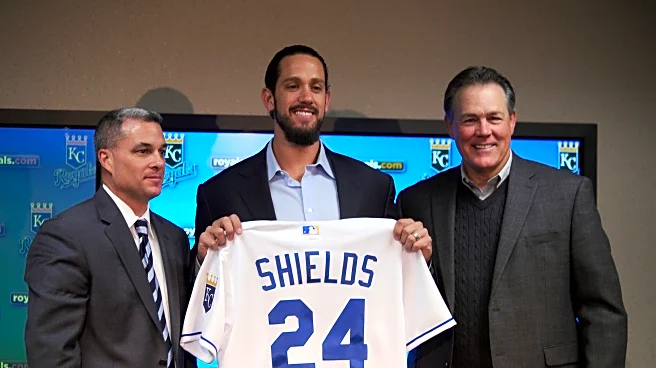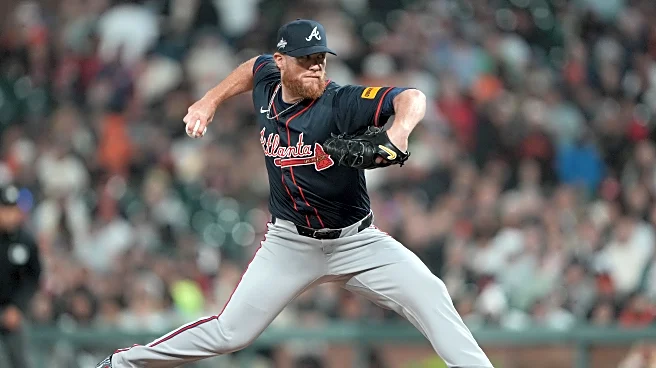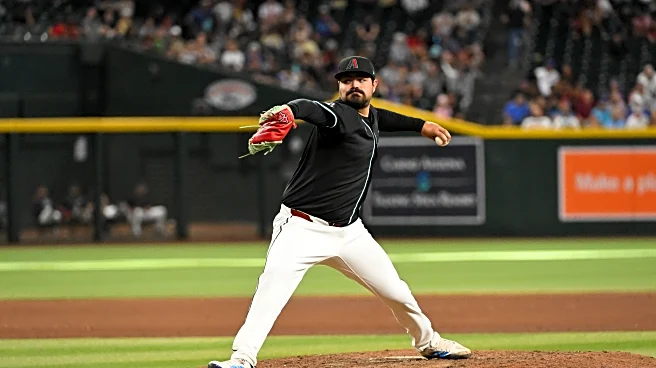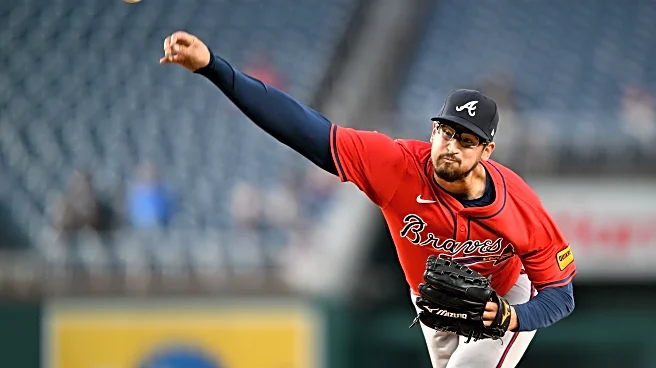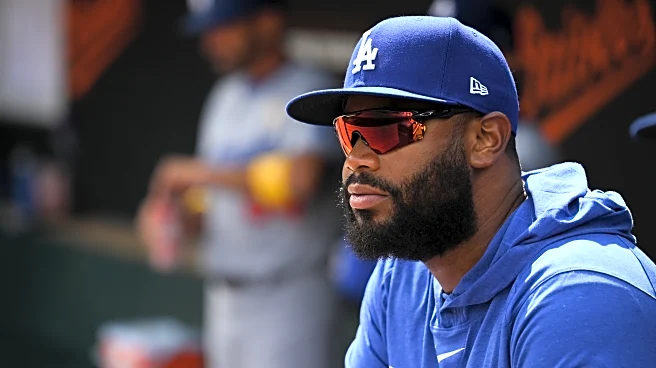Rafael Montero was actually somewhat familiar with pitching in Truist Park. After all, he was part of the 2021 American League Champion Houston Astros squad who squared off against the eventual 2021 World Series Champions Atlanta Braves in that year’s World Series. Four years later, Montero found himself in Truist Park as part of the home team while the Braves were busy searching for any type of help in the pitching department. Was Montero able to stick around long enough to help out? It depends
on how you feel about the way he left.
How acquired
While the Braves were busy playing the Phillies on April 8, Atlanta acquired Montero from the Astros in exchange for cash considerations and a player to be named later. Montero was set to make $11.5 million in 2025 and as it turned out, the Braves ended up chipping in $3 million in cash as the Astros ended up paying the rest. The PTBNL ended up being Patrick Halligan, in case you were interested in seeing how that mystery ended up getting solved.
For the Astros, Montero’s contract situation was one of those oddities that happened in the wake of their title run in 2022. Then-General Manager James Click left the organization, and while there were promotions in Click’s stead, it looked like owner Jim Crane negotiated the $34.5 million, three-year deal himself. It didn’t age well.
What were the expectations?
The clear hope was that Montero would be able to provide a boost to a Braves bullpen that sorely needed it at that particular point in time. They had been shuffling the bullpen around furiously once it became clear that simply running it back with the usual suspects (plus Héctor Neris being inexplicably used in a high-leverage role) wasn’t going to work out.
Montero’s experience would surely be helpful but at the same time, Montero hadn’t cracked 1 fWAR since 2022 and was actually underwater in terms of fWAR in the 2024 season with -0.9 fWAR over 38.1 innings. The expectations for Montero weren’t super high but as long as he was steady (if not spectacular) then things would’ve worked out fine.
Specifically, Montero had a great run in 2022 (1.5 fWAR, 62/67/81 ERA-/FIP-/xFIP-), but took a massive step back in 2023 (0.1 fWAR, 119/105/96), and then collapsed in 2024 (-0.9 fWAR, 117/158/132). He threw four decent innings for Houston prior to the deal, but fundamentally, the Astros wanted out of a contract that turned sour almost immediately, and Montero was projected to be closer to replacement level than “good” as a result of his 2023-2024 struggles.
2025 results
If you look at his Baseball Savant page, Montero had it going on. There’s a lot of pink and red on display over there, with his strongest metric being an xBA in the 88th percentile. Montero’s split-finger ended up with a .174 xBA against, which is not bad at all considering that it was his most thrown pitch in 2025.
Despite the great splitter, it was far from a solid body of work for Montero to harp on while he was with the Braves. He eventually finished with an ERA of 5.50 (130 ERA-) and a FIP of 4.13 (102 FIP-) as he delivered an underwhelming strikeout rate of 22.7 percent while walking 15 percent of the batters that he saw while he was with the Braves. Though many of his bullpen compatriots were plagued by high HR/FBs, which also partially killed Montero’s 2023 and 2024 campaigns, Montero’s 102 FIP- was belied by a 112 xFIP-, so he wasn’t really even pitching particularly passably to get his replacement-level results. At the end of his time in Atlanta, he finished with 0.0 fWAR across 34 1/3 innings and 36 appearances. He wasn’t good but he wasn’t awful either – he was perfectly balanced as a generic last-guy-in-bullpen, as all things should be.
Despite the fact that Rafael Montero was largely underwhelming coming out of the bullpen for Atlanta, that was still good enough to catch the eye of a potential Postseason team. The Tigers decided that they wanted Montero and his split-finger pitch and they were willing to send Jim Jarvis here in exchange. Jarvis has provided some much-needed positional depth, so it’s not as if Montero’s time here was completely in vain as the Braves did net a decent prospect in return for those 34 1/3 innings of middling performance. Montero went 70/108/108 with the Tigers… I guess they appreciated the ERA and his positive WPA, even though he didn’t pitch particularly well in getting it.
All in all, Montero finished with 0.1 fWAR, his third time in three seasons failing to clear that threshold. His final line was 107/100/108, which is pretty in line with his career 115/103/104 at this point. The positive WPA he accrued was basically entirely a result of his Tigers tenure.
What went right?
On four separate occasions during the 2025 season, Rafael Montero pitched two innings and racked up at least three strikeouts without giving up a run or giving up one hit or fewer. Two of those occasions happened while he was with the Braves.
The first occasion happened on May 14 against the Nationals, which is when Montero faced seven batters and only gave up one hit and no walks while striking out three batters. The second time happened exactly one month later on June 14, which is when Montero faced six Rockies batters and struck out four of them while putting zeros in every other category over the course of the two innings while he was out there.
This was also part of a great performance from Atlanta’s pitching staff in general, as they inexplicably racked up 19 strikeouts on the day – a franchise record, no less. So Rafael Montero had a hand in making club history for the Braves. Go figure.

Montero also had the weird happenstance of having his highest-WPA outing and highest-WPA play as a Brave come in his first appearance for his new team. On April 10, back when it seemed like the season might still have hope despite a rough start, and when it was still possible that Montero’s presence on the roster was the result of something other than a salary dump, he threw a scoreless top of the tenth, getting Kyle Schwarber to ground out (moving the free runner to third), and then striking out Trea Turner and Bryce Harper. The strikeout of Turner, below, came after he threw just one of six pitches in the zone and got Turner waving at a skedaddling slider:
On the plus side, the Braves seemed to grasp that Montero was not exactly a great fit for higher-leverage work. For a six-week stretch between mid-May and early July, he generally didn’t see any meaningful leverage. He then had a bunch of higher-leverage blowups heading into the All-Star Break, was once again banished to mop-up work, and then traded to the Tigers.
From a pitch-level perspective, it was a mixed bag. Montero debuted a splitter in 2025, and it worked pretty well — .265 xwOBA-against, a whiff rate north of 36 percent. He was mostly able to execute it in a consistent location, on the low, arm-side corner. That salvaged his profile from being awful, but for the counterbalance, see below.
What went wrong?
It’s honestly impressive that the Braves were able to get Jim Jarvis for Rafael Montero when they did because Montero was certainly in the midst of a rough patch as the deadline approached. On July 25 in Arlington against the Rangers, Montero got lit up for four runs on two hits and two walks. He proceeded to follow that up three days later against the Royals by getting dinged for three runs on two more hits and two more walks as he failed to record a single out. If you include an appearance against the Giants on July 21, that was a three-game stretch where he gave up eight runs in 2 1/3 innings. Oof!
Montero’s worst outing by WPA came in extra innings — he began the top of the tenth against the Orioles, and by the time he left, it was a three-run game (that also ended up being the final score). Unlike other Montero meltdowns, this one was more just ball-in-play stuff, as he finished with a 1/1 K/BB ratio and was killed by grounders finding holes, but he wasn’t exactly dealing in a way that compensated for this blow-up in most of his other outings.
Montero had an aggregate 124/92/124 line from the time he was traded to the Braves to the time he was essentially removed from any leverage of relevance in mid-May, had a 46/64/72 line in almost exclusively low leverage for about six weeks afterwards, and then imploded to the tune of a 281/179/163 line the rest of the way, including that brief stretch where the Braves re-promoted him to higher leverage opportunities.
In terms of arsenal, the problem was that his fastball was not particularly fast, and lacked particularly great shape. He still threw it at the top of the zone and mostly hit that spot, but it just wasn’t that effective. Combine that with okay command but a propensity to miss spots and a profile that generally wanted swings out of the zone on the splitter, and hitters had a fairly easy time jumping on a not-great fastball, waiting out a walk, or taking their chances on a mislocated pitch.
2026 outlook
Montero delivered more of the same with the Tigers – in fact, his strikeout rate went down a tick while his walk rate went up a bit. As noted above, he got fairly fortunate in Detroit without doing much to earn it, but his performance was apparently good enough to earn him a spot on Detroit’s Postseason roster for both the Wild Card Series and the Divisional Series as well. Sometimes a change of scenery and a complete reversal of fortune is all you need, I guess?
Of course, that didn’t exactly help the Tigers much. Montero made one postseason appearance, trying to protect a one-run lead in the sixth in Game 1. He did not, as the Mariners went walk-single-single against him to tie the game and chase him, though the Tigers ended up winning eventually anyway.
Montero is now a free agent heading into his age-35 season and I highly doubt that he’ll be getting anywhere near his prior big-money contract to pitch for any team this season. He’s shown that he can be a perfectly okay reliever for any given team if you don’t mind that he’s actually all that productive, so I imagine that he won’t have too many problems finding a team to latch on to if he wants to continue pitching. It’s anybody’s guess as to where he lands but at least the Braves can move forward knowing that they were able to get a somewhat decent prospect in exchange for Montero. The Braves probably were never expecting to be in the business of flipping vets for prospects in 2025 but in this case, they managed to do a decent job of making sure Montero’s stint with Atlanta didn’t end up being for nothing.
Montero projects as a replacement-level-but-durable reliever at this point. He’ll probably be in the majors for at least part of 2026, but his days of being highly compensated for it are likely over.



